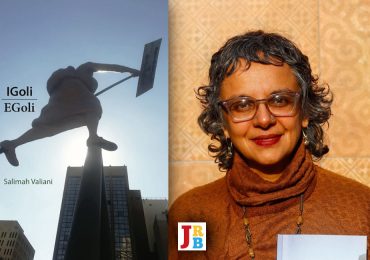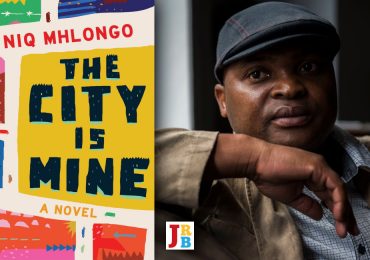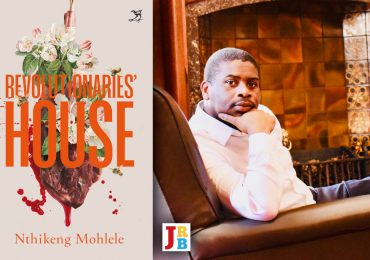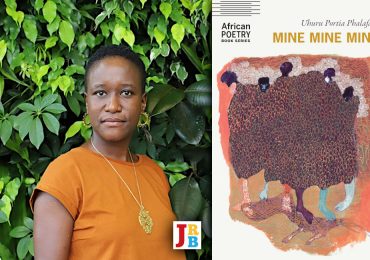There is something permanent about how Johannesburg reveals itself to anyone arriving in it, etching itself into the memory, even before any real memories of it have been formed. The city emerges first as a suggestion, a sign, a billboard, then as a collection of buildings floating in the sky, brutalist and modern, derelict and new, clean and dirty. And then there is the smell, something rotten, something cooking, and then the sound, something pleasant, something violent. All of which, in equal proportion, form the fabric of the city. At first sight, Johannesburg is simultaneously welcoming and unwelcoming, familiar and unfamiliar. Even now, after almost ten years of living here, that first day when the train pulled into the city is etched in my memory. The morning sun, soft and intruding, enters through the bodies standing by the windows, draws silhouettes on the train carriages, and finds its way everywhere. Out of sight, the morning awakes sonically, taxis hoot, commuters and vendors chatter. This remains the moment the brain recalls the grand sight of the city. A city in part first, and then in full.
Now, living in the city, however extensively one explores it, it insists on being experienced in angles and measured scale. It reveals itself in bits, a tease, an introvert. A moment here, then another there, separated by design, disconnected by mobility. The design of the city insists that one must travel to get to another part of it. An unintuitive transportation system, catering to archaic functionality, the perfect recipe for travelling angst. In the CBD, within walking distance of each other, are the Bree and the MTN taxi ranks, where most city commuters assemble before spreading out in their separate directions. The taxi ranks are signatured by an organised, chaotic operational management system. A kind of human body and vehicular chess, a taxi slides out and the other slides in, always inches apart. Apart from the formal taxi ranks, all around the city, hogging pedestrian corners, informal taxi ranks exist, with queues of commuters, human cartography snaking around blocks. In places far apart from this there are the Gautrain stations, state-of-the-art transportation, for the rich, not for the poor. To add to that, there are the ride-hailing apps, which, if one has money, are convenient. But it does not matter which mode of transport one makes use of to get around the city; there is always required mobility, one is always travelling here. The convenience to the inconvenience is that one can, in a single day, see and be present in multiple parts of the city.
There are many ways to see the city like this, as a montage, as a collection of cityscapes. On the M2, the Francois Oberholzer Freeway, which runs south of the CBD, heading eastwards, towards OR Tambo Airport, Alberton, Germiston, one encounters the city as a landscape. On the left, city central sits in its grand presence, highways coming out of other highways, buildings appearing to be built from their higher floors, trees peaking at distances.
Architecture gives way to architecture, sun gives way to shade, safety gives way to danger, quiet gives way to noise, flat terrain gives way to hills, closed curtains give way to torn curtains, flapping in the wind. The topography of the city in a single shifting panorama.
In and around the city, there are over ten million trees, all kinds, all ages, all locations. Jacaranda, eucalyptus, English oak, some dating back to the nineteen-hundreds. The city, its residents proudly recite, is a giant man-made forest. The city needs the trees. Every city needs trees. A city without trees plunges its citizens into overwhelming claustrophobia. In Johannesburg, as the result of the trees, one can escape into the wild, finding refuge, with ease. There, under the trees, with the half-obscured view, volumes of water running past in the spruit, the city feels distant, out there somewhere. It is a temporary reprieve, but a reset button nonetheless, even if it can only be pressed halfway, because escaping the city within the city is always short lived. By being here, by being stationed in the city, by being forced to find employment here, residents partake in a brutal exchange. We give the city our sanity, and in return, the city gives us an economic life.
Johannesburg tree planting is calculated by distance. Parks, over two thousand of them, exist within residential areas, parks not far from one another, parks just far enough from the city bustle, hiking spots above the city. The number has been steadily growing: in 1934, there were just sixty-seven. One of the oldest is Joubert Park, originally planned in 1887. The best view of the city’s trees is from its hiking trails. Pick any one, and once you are at the top the city lies beneath the trees, blanketed in greenery, breathing oxygen. In summer, when the city is in bloom, it is a Fauvist canvas, under the trees all but the tallest buildings.
Even in the CBD, trees negotiate space with concrete. A building takes the corner on one street, then in the next, trees have their turn. Every day the dialogue is happening. But even the planting of trees, the presence of greenery, is political, and South Africa is a country built on racial biases. Some places did not experience the government’s aggressive tree-planting plan. It was only in the nineteen-fifties that Soweto, for instance, began to benefit. Centuries of catching up. In 2006, the City of Johannesburg introduced ‘Greening Soweto’, a 2010 World Cup legacy project, which aimed to plant 200,000 trees in the township. The number was reached by the end of 2010, although not all the trees survived.
This negotiating, between the wilderness and the city, the trees and architecture, angst and reprieve, inequality and equality, is what makes this city what it is. Johannesburg is concrete, but it is also fragile.
- Guest City Editor Lidudumalingani is a writer, filmmaker and photographer, and winner of the 2016 Caine Prize. Follow him on Instagram and Twitter.






This piece just reminded me of Phaswane Mphe’s Welcome to Our Hillbrow, “walk fast or you will die”, and subsequently Mongane Wally Serote’s City Johannesburg and the movie Soweto Green featuring John Kani..
Thanks for this